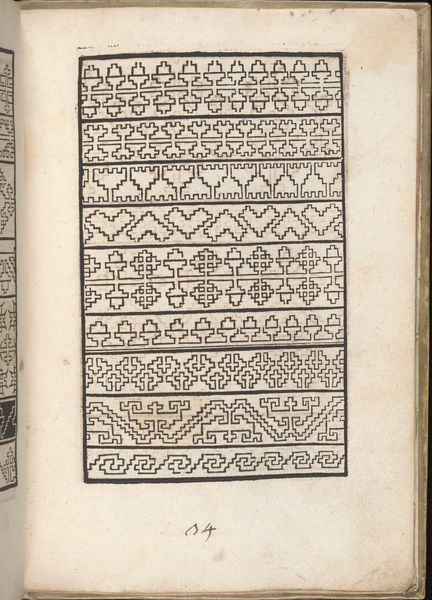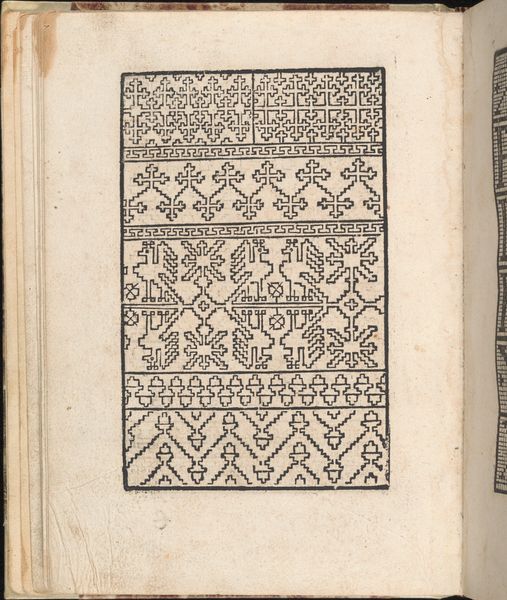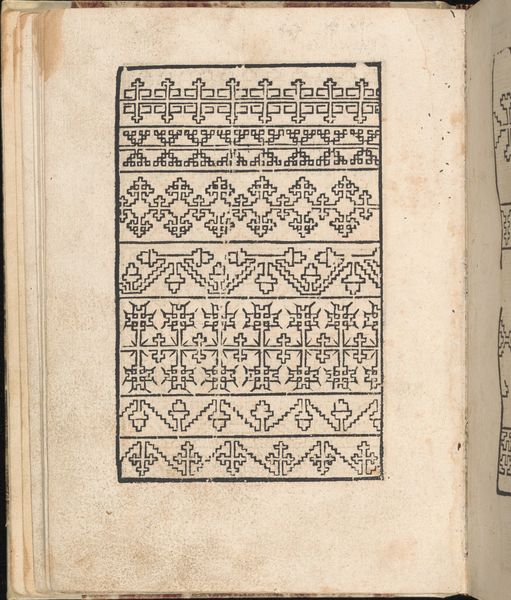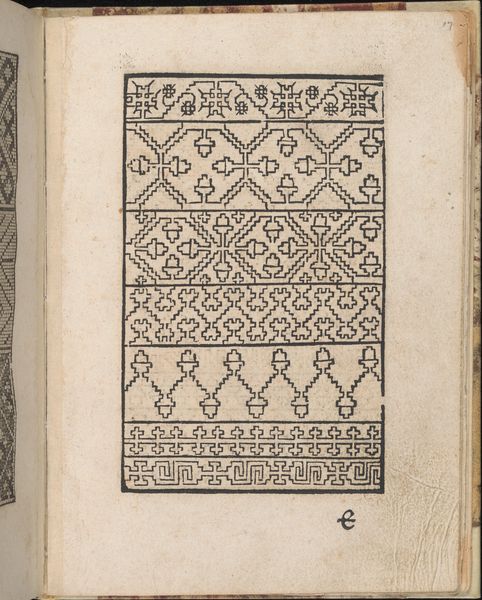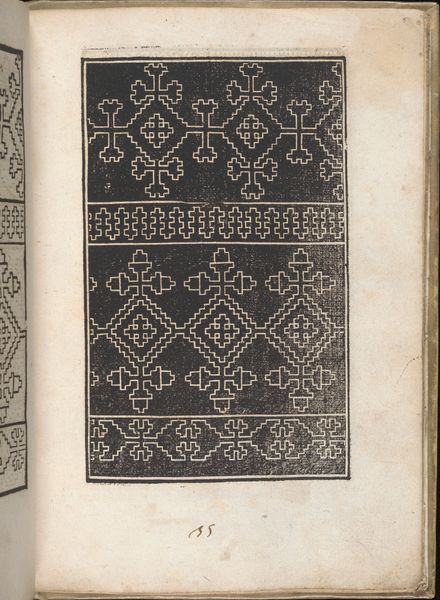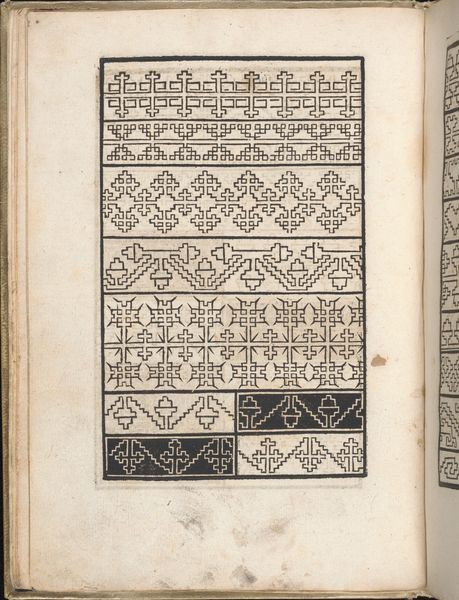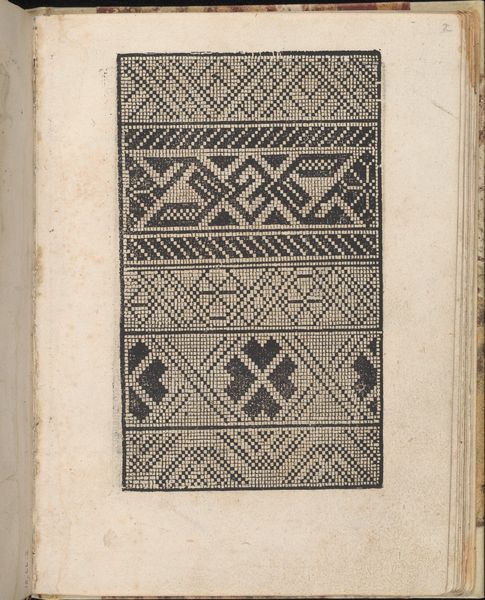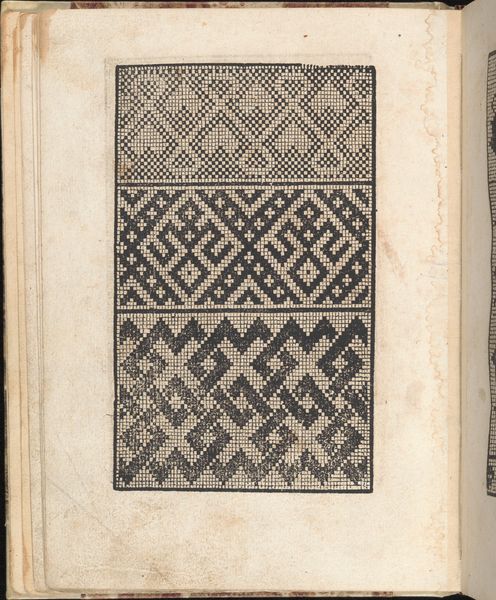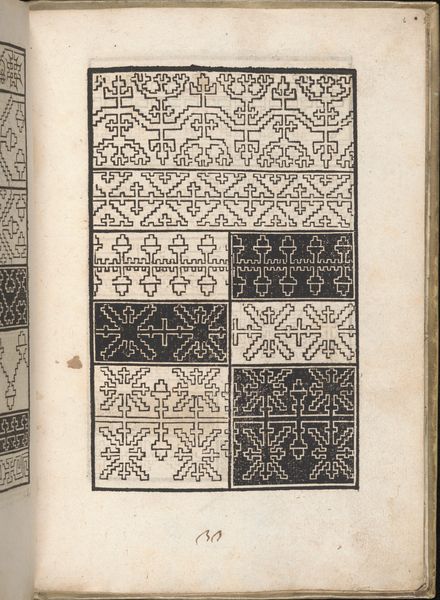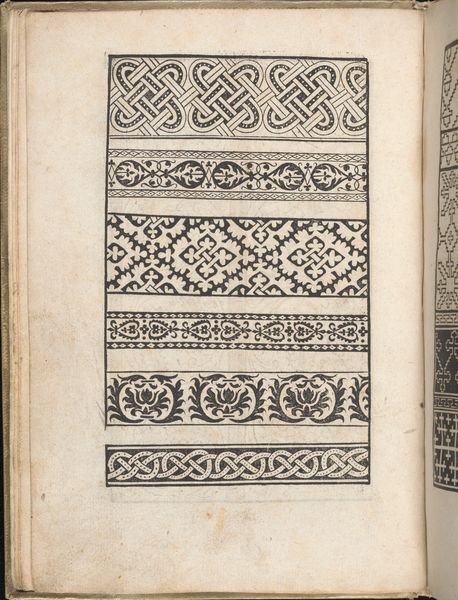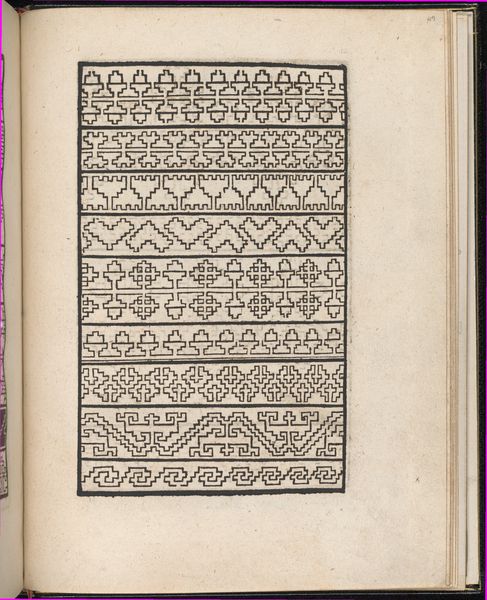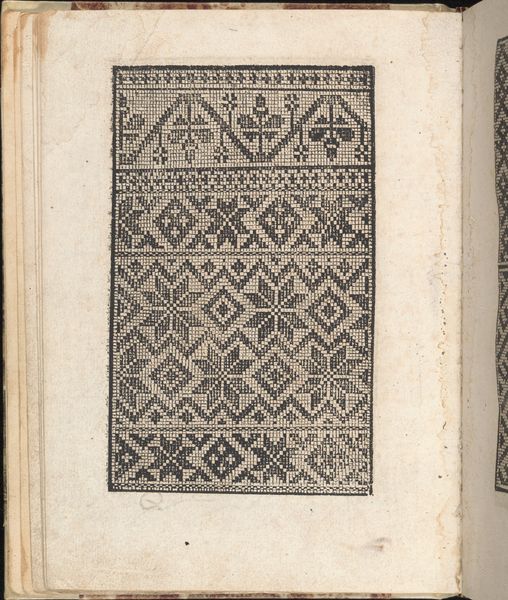
Ein new getruckt model Büchli...Page 18, verso 1529
0:00
0:00
drawing, graphic-art, ornament, print, paper, woodcut
#
drawing
#
graphic-art
#
ornament
#
ink paper printed
# print
#
book
#
paper
#
11_renaissance
#
geometric
#
woodcut
Dimensions: Overall: 7 7/8 x 6 1/8 in. (20 x 15.5 cm)
Copyright: Public Domain
Curator: This page, verso 18 from "Ein new getruckt model Büchli" created by Johann Schönsperger the Younger in 1529, presents a compelling example of Renaissance printmaking, held here at the Met. Editor: The stark contrast of the black ink against the aged paper is immediately striking. There’s a disciplined energy here. It feels incredibly precise, yet… somehow handmade? Curator: It's a woodcut, a relatively accessible method of printmaking at the time, meaning the artist carved the design into a block of wood. These pattern books democratized design, circulating visual ideas widely. This enabled artisans to enrich the decorative language available to various social classes. Editor: Absolutely. Considering it as a commercial print intended for artisans sheds new light. You begin to notice the practicality. The repetitive motifs arranged as usable border designs... They aren't high art meant to be hung on a wall, but rather, patterns intended to be transferred to another medium. It embodies utility, a craft object produced to support other crafts. Curator: The book would have functioned as a sourcebook of patterns readily available to craftsmen of the period such as goldsmiths and embroiderers for their work. You begin to consider the cultural power these patterns had – they not only reflected the style of the time but, in effect, disseminated and created it. Editor: Look at the materials, too. Paper, ink, wood. Humble components enabling the transmission of creative possibility to an array of makers. The availability of materials shapes not just the finished product, but what kind of artwork could emerge and how creative energy is applied within its historical time. Curator: That’s a very interesting point about shaping what type of art could emerge. In this context, these simple geometric patterns, printed and reproduced for functional application, could hold the same cultural value as grand paintings within specific social and cultural circles. Editor: Thinking about it that way brings this print into focus. Its creation is inherently entwined with consumption, with labor. Looking beyond the finished design into how it lives, changes how you assess its importance. Curator: It brings a refreshing new lens through which to view it. Thank you. Editor: Likewise! It’s fascinating to appreciate its wider impact.
Comments
No comments
Be the first to comment and join the conversation on the ultimate creative platform.
